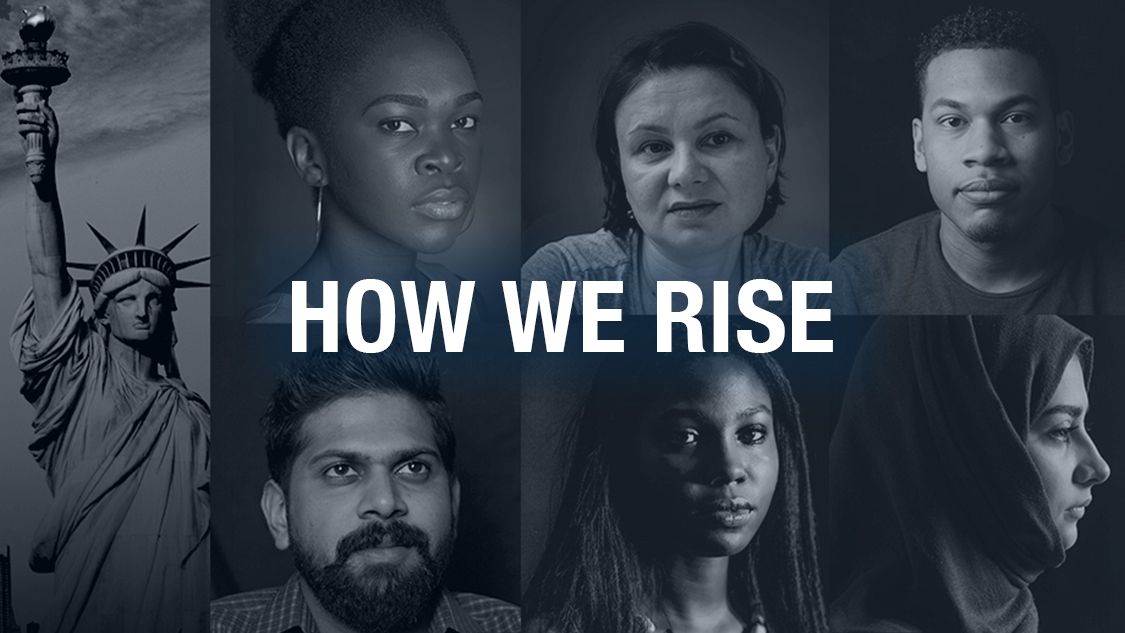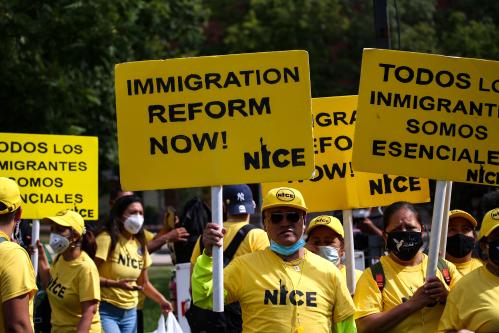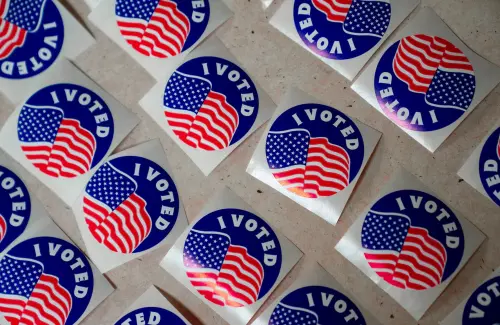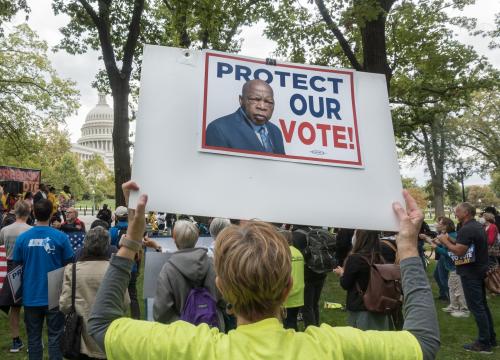The past two election cycles have demonstrated the power of the Native American vote in federal elections. Native American voters were recognized as a consequential electoral sub-group in many key races in both 2018 and 2020. This includes the 2020 Democratic victory in Arizona, their first since 1996 in the state, and President Biden’s victory in Wisconsin. Moving beyond Native American heritage month and looking ahead to the 2022 congressional elections, this post summarizes what we have learned about the voting behavior of this important subgroup of the larger electorate who are sadly often invisible in national discussions about electoral politics.
What Have We Learned About Native American Voting Behavior From The Last Two Election Cycles?
I draw largely from earlier work that pulled from the 2018 and 2020 American Election Eve Surveys to explore factors that help explain Native American voting behavior. Though they rely on an opt-in/self-identification approach to capture Native American respondents, both surveys have large national samples of Native American voters that allows for a comparison between Native Americans and other racial and ethnic groups, as well as internal variation within this diverse community.
As reflected in the figure below, 61% of Native American voters reported voting for a Democratic candidate for Congress in 2018, which is significantly higher than white voters, but lower than Black, Latino, and Asian American/Pacific Islander voters Democratic vote share.
There are some important sources of variation in voting behavior among Native Americans that are worth noting.[i] First, there was a significant gender gap among Native American voters in 2018, with 67% of women reporting they voted Democratically compared to 54% of Native American men. A sense of gender consciousness ignited by the context of sexual harassment and the Me Too Movement not only influenced Native American voting behavior in 2018, but turnout as well. In fact, 72% of Native American women voters encouraged friends or family to register or vote, a rate 13 percentage points higher than for Native American men.
Native American Independents broke toward the Democrats, with 46% of independent/other party identifiers reported voting for a Democratic candidate, compared to 38% for a Republican candidate and 13% for another party’s candidate. This will be key in 2022, as Native Americans have been found to be less attached to either of the dominant political parties.
Young Native American voters were critical in 2018, and across many indicators of civic engagement in the survey, those between the ages of 18 to 29 were the most politically active of all Native American age groups. More specifically, 59% of young Native American voters encouraged friends or family to register or vote, 35% attended a protest or demonstration, and 27% volunteered for a candidate or a voter outreach drive.
As we documented in a brief drawing from the 2020 Election Eve Survey, the trends from 2018 across the Native American electorate generally continued in 2020, where 60% of Native American voters supported President Biden, a rate again higher than non-Hispanic white voters, but lower than all other racial and ethnic minorities. There was an identical percentage who reported that they voted for a Democratic candidate for the U.S. House in their district. Gender, age, and partisanship continued to be key drivers of variation in voting behavior, with similar patterns to what was observed in 2018. The 2020 data also suggested that Native American voters in urban areas were more likely to support the Biden/Harris ticket (+5%) than those living in rural areas of the country.
The severe inequalities facing Native Americans in pandemic outcomes led to COVID-19 relief being the most important issue for Native voters (45%). This was followed by jobs and the economy (37%) and the cost of health care (27%) according to the 2020 survey. However, other issue areas, such as climate change and police brutality were also identified as key issues among a sizable segment of Native American voters, particularly those under the age of 30.
The 2020 election also provided direct evidence for the long-standing suggestion among experts of Native American politics that Native Americans do not vote based on party, but on which candidates will do the most to advance the interests of Native American communities. When asked what was the primary motivation for their voting decision, 26% of Native American respondents said it was to “support and represent the Native American/American Indian community” which was higher than other racial and ethnic groups. Conversely, Native Americans were less likely than other groups to vote in 2020 to support Democratic candidates.
Native American Candidates Help Drive Mobilization and Turnout
A major driver for the high turnout rates of Native American voters in 2018 and 2020 was the high rates of mobilization activities directed toward these communities. The 2020 Election Eve Survey identified that 57% of Native American voters were contacted by a campaign, political party, or community organization to ask them to register to vote or vote. This was higher than all other racial and ethnic groups in the survey other than African Americans at 67%.
The data suggests that outreach from community organizations was particularly high, as 28% of Native Americans who were contacted indicated that this came from people from community organizations, again a higher percentage than all groups but African Americans. There is also a much more even balance in the mobilization of Native Americans by party than for other racial and ethnic minorities. As reflected in the figure below, 36% of respondents reported that the people who contacted them were from the Republican party, only 2% lower than the percentage of respondents who were contacted by Democrats. This may help explain the lower Democratic vote share among Native Americans when compared to Latinos and African Americans.
Approximately 93 Native American and Alaska Native candidates ran for political office in 2018. Ten Native American candidates ran for the House of Representatives, seventy-two Native American candidates ran for state legislature seats, and 11 Native American and Alaska Native candidates ran for state offices. The record breaking number of Native American candidates running for office in 2018 helped fuel the higher than expected turnout that year, as the political science literature has found that minority electorates tend to vote at higher rates when they have co-ethnic candidates to support.
Representation of Native American in the US House continued in 2020, where overall, a record 6 Native Americans were elected to Congress. The ability for candidates to mobilize voters from their own racial and ethnic communities suggests that for turnout in 2022 to mirror what we observed in 2018, Native American participation in the election as candidates must also be reflective of 2018. It is too early to tell whether this will happen, but with many Native Americans facing re-election, there is potential for mobilization to remain high in 2022. The even split between Democratic and Republican members elected in 2020 (3 Dem/ 3 GOP) is consistent with the nearly even partisanship split in reported contact with Native American communities.
Evidence to Suggest Native American Engagement in 2022 Will Remain High
If turnout among Native Americans in 2022 is on par with 2018 and 2020, this sub-group of the electorate could have an impact on election outcomes across the country. The population density of Native Americans in several specific states increases the potential for them to be influential voters. For example, at 11% of the overall population in New Mexico, Native American voters will have an impact on all three congressional races in the state, particularly in the state’s southern district which has been one of the most watched races in the country over the past two cycles and is the home district to Native American incumbent Yvette Harrell. Also in the West, Arizona has one of the most competitive senate races for 2022 and Native American voters have been critical to outcomes in the state in the past two cycles.
Oklahoma is another key state to focus on for Native American politics. In 2018 the state saw Tom Cole (Chickasaw) and Markwayne Mullin (Cherokee) win re-election to Congress, and Kevin Stitt (Cherokee) was elected governor of Oklahoma.
We have historically observed substantial drops in turnout during off-year elections when there is not a Presidential race to drive mobilization, particularly among racial and ethnic minorities. However, there are a few reasons for optimism that Native Americans may continue to outperform expectations in 2022.
First, although Native Americans tend to vote at lower rates than other racial and ethnic groups, published analysis has suggested that American Indian and Alaska Natives (AI/ANs) tend to vote in midterm congressional years at relatively high rates. We therefore may not see a major drop in voting rates for Native Americans relative to 2020 than for other groups.
Second, Native American voters may be energized to build momentum generated by some positive outcomes for their collective interests during the Biden administration’s first term. This includes having the first Native American Cabinet Secretary in a prominent position. Secretary Haaland has used her position in creative ways to represent Native Americans, most recently announcing that her office will work on removing racially insensitive names used (such as squaw) to define places across the nation.
Third, the Build Back Better plan has many components aimed at advancing racial equity that are projected to advance the interests of racial and ethnic minorities, including Native Americans. This includes advancing climate change initiatives and environmental justice, an issue area this brief identifies as important to Native American voters. The framework will also greatly expand access to broadband critical to Native American communities who face the greatest inequalities in access to high speed internet of any racial and ethnic group in the nation. Mid-term congressional elections are always a referendum on the President and the President’s party, so how this signature domestic policy is received by the Native American electorate is particularly salient.
The success of the mobilization efforts in 2018 and 2020 should translate to the investment of resources needed to allow the groups on the ground, who have trust from tribal communities, to continue outreach efforts in 2022 that can keep turnout high among Native Americans. This will be particularly important for the prospect of continuing the trends over the last two election cycles regarding high participation of young voters. In my view, what we ultimately see happen in 2022 for the Native American electorate will depend greatly on whether the funding for get out the vote efforts makes it way to groups who demonstrated that they are well worth that investment over the past two election cycles.
Footnotes
[i] This section of the report draws largely from the following report: https://latinodecisions.com/wp-content/uploads/2019/06/Native_Am_2018_Brief.pdf
The Brookings Institution is committed to quality, independence, and impact.
We are supported by a diverse array of funders. In line with our values and policies, each Brookings publication represents the sole views of its author(s).










Commentary
What might we expect from Native American voters in the upcoming 2022 election?
December 16, 2021